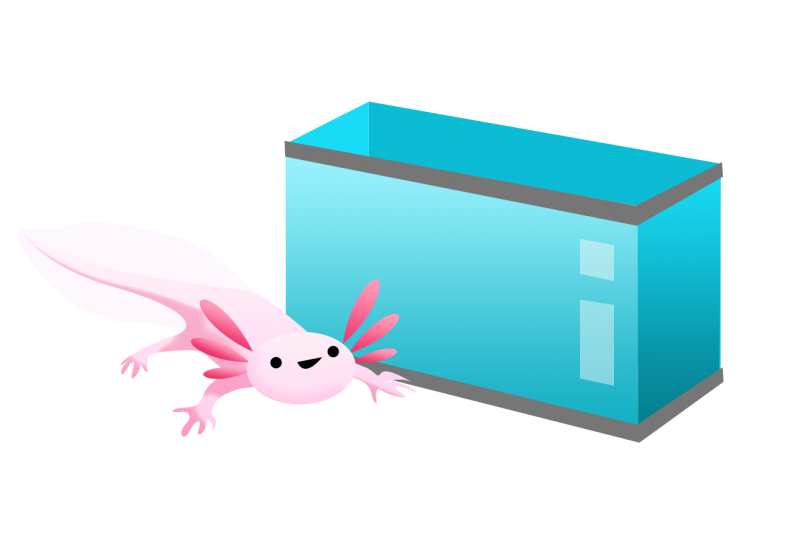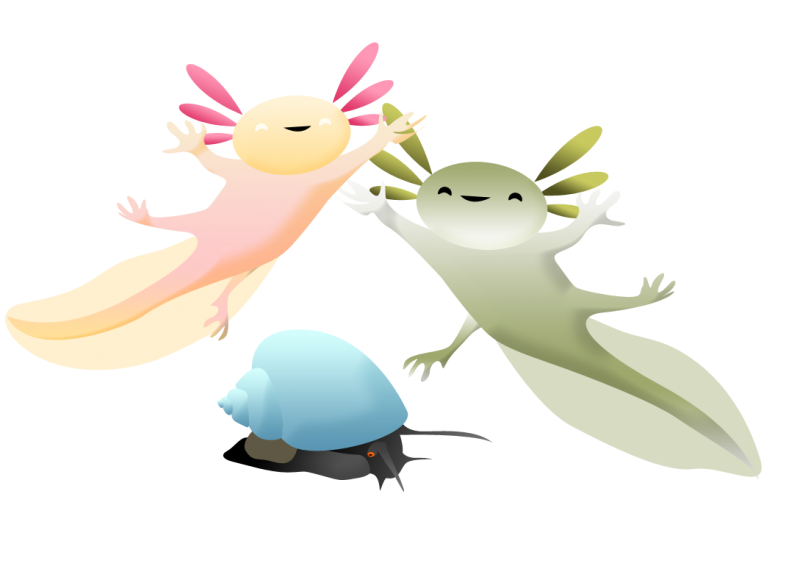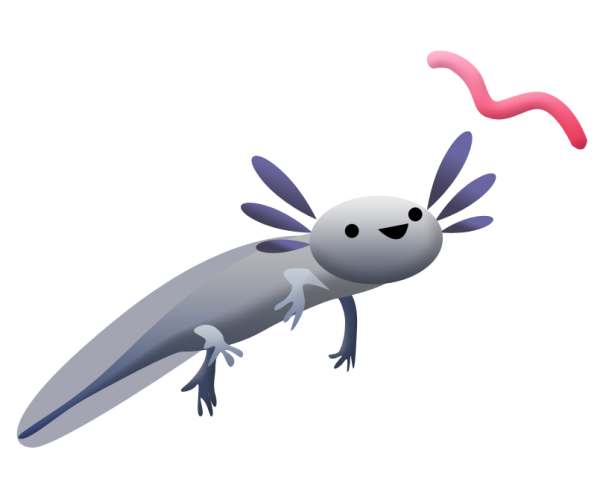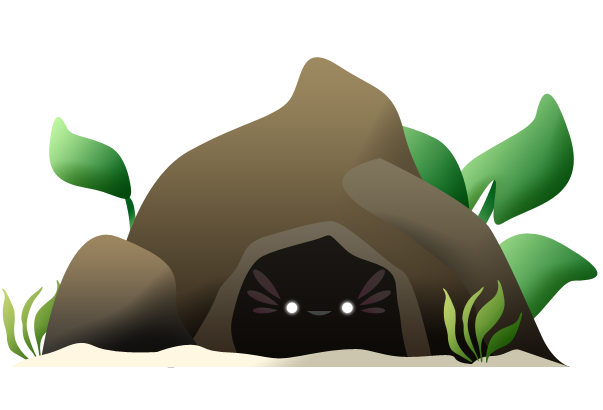
Tank
Adult axolotls on average reach 8″ long, some smaller and some bigger. Most people prefer 10-20 gallons per axie. Depending on your filtration, some adjustment can be made. Use a lid or fill it to 3″ below the surface to prevent jumpers!
Placing the Aquarium
Aquariums are heavy, so be sure you place it in an area that can support the weight. You can choose from either a glass or acrylic tank. Each has its own advantages. Acrylic is lighter, stronger and more durable than glass, as well as resistant to leaking. Glass is generally more affordable and readily available.
As far as placement of the tank goes, it can be helpful to remember that keeping it cool is important. For this reason it should not be placed in an area that gets direct sunlight or window light. Generally the lower to the floor, the cooler the temperature. Many people like to keep their tank in the basement where it is usually cooler. But don’t worry, if for some reason that doesn’t work for you, there are other ways to cool the aquarium.
Size & Shape
When considering the shape of the tank, please keep in mind that axolotls prefer to swim lengthwise than up and down. Consider their body shape, which is like a submarine/hot dog. They also spend the majority of their time on the ground. Taller tanks put more water pressure on the axolotl and give less side to side swimming room.
A word of advice when it comes to choosing a size: more important than getting hung up on exact rules is ensuring your water and environment is suitable for your pet. (Bjorklund, p. 5) How many animals your tank can support depends on a variety of factors, including your water change schedule, filtration, feeding and if you have live plants.

Water Care
A power filter rated for 10-20 gallons is ideal, just make sure the flow isn’t too strong. Sponge filters are also good and are what we prefer here at Fantaxies. No filter? Daily water changes can be done instead. You can use a fan to keep the water cool. A good water conditioner is important to make tap water safe. Test strips are great to check your ammonia, nitrite, nitrate and pH levels!
- Temperature: 60-68 degrees F
- pH: 7-8.5
- Ammonia & nitrite: 0
- Nitrate: Below 40
Water Care Equipment List
1. Water Conditioner
Conditioning your tap water is a step you can’t overlook in most situations. Many people like to use a product called SeaChem Prime, which can be useful during cycling to help with ammonia and nitrite toxicity. It also removes heavy metals from the water. Water conditioners that are vitamin C based work very well also.
2. Siphon
When it comes to doing water changes, a couple of useful things to have on hand are a turkey baster (perfect for picking up isolated poop) and a siphon. The siphon can be used to drain more water faster while simultaneously vacuuming the bottom.
3. Test Kit
How do you know if your water is safe for your axolotl? It’s easy – do a water test! Test kits are available in either liquid or strip form. Strips are cheaper and easiest to use and while not quite as precise as liquid kits for measuring nitrate, do the job sufficiently. During cycling, water should be tested daily. Once the tank has been cycled, you can cut back to once a week. The main parameters you need to measure are:
- Ammonia
- Nitrite
- Nitrate
- pH
- KH
- GH
If something is wrong with your water on the test, a water change is usually a good idea.
4. Thermometer
Unlike some freshwater fish, temperature is very important to the axie Mexican salamander. They like things cold, and warm water causes them to get sick. You can use a digital thermometer or the old fashioned glass kind that remain in the tank, or even the strips you put along the outside of the tank wall. Any of those options will work well. Digital thermometers are the most accurate and fast to read.
5. Filter
Unless you want to do a lot more work, don’t forget your filter! 🙂 Filters help you go much longer between maintenance times on the tank. They also help supply oxygen by agitating the water. There are many kinds of filters available. For beginners, a sponge filter or a hang on the back filter are probably the easiest to set up and maintain. Keep in mind that your filter will need to be cycled for it to work. You can buy pre-cycled filters online or from a friend, or cycle it yourself (which takes several weeks).
Read more about the proper equipment for your axolotl.

Friends
Generally, some safe tank mates for adult axolotls are:
- Other axolotls (when well fed)
- Minnows
- Ghost Shrimp
- Livebearers (mosquito fish, guppies, endlers, swords, mollies & platies)
- Zebra Danios
- Orange-finned Danios
- Dojo Loaches (same size as the axolotl)
- Golden Skiffas
- Japanese Trapdoor Snails
- Mystery snails
Note that some fish/shrimp may eventually become a snack! 🙂
Read More
Feeding
Axolotls are carnivores and love meat. They will happily eat:
- Earthworms
- Frozen bloodworms
- Blackworms
- Soft salmon pellets
- Raw deveined seafood
- Repashy Grub Pie
Babies should be fed 1-2X daily, and juveniles over 4 inches every other day. They don’t see well, so using tongs to hold the food in front of them can help them find it.

Decorations
One hide per axolotl is a good recommendation. You can even make your own as long as they don’t have sharp edges. Adult axolotls do well with a fine sand substrate. They like to grip onto things. Live plants help purify the water.


